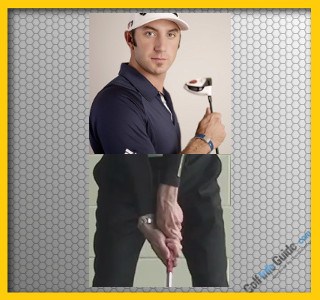
The 6’4” athlete is best known for his prodigious driving distance, but he’s an underrated putter. On the greens, Dustin Johnson’s grip is – believe it or not – quite conventional. The only slight oddity in his reverse-overlap grip is a right hand that’s a little stronger than his neutral left. In other words, his right hand is turned slightly away from the target, underneath the handle.
This likely helps Johnson release the putter at impact and into the follow-through, preventing pushed putts and creating a true roll.
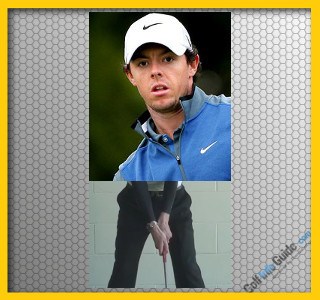
Rory McIlroy grip features a slightly strong left hand position, which promotes freedom of movement in the arms and shoulders as he sweeps the club to the top and down into the ball. While this grip position leaves him somewhat vulnerable to the occasional hook (see his ill-fated tee shot on No. 10 in the final round of the 2011 Masters), the tradeoff is well worth it. A weaker grip position could sap some of McIlroy’s power and prevent him from hitting his favored shot, the high draw.
In winning the U.S. Open, PGA Championship and Open Championship by age 25, McIlroy joined Jack Nicklaus and Tiger Woods as the youngest the achieve that feat. He’s got something else in common with them, too: an interlocking grip.
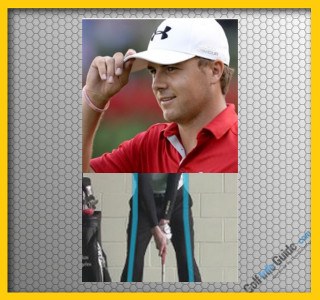
Practically all accomplished golfers, from pros to the club level, match their left and right hands on the handle. In other words, the palms face each other directly regardless of their position (neutral, weak or strong).
Not Spieth’s. His left hand is in a relatively weak position, or rotated toward the target, while his right is somewhat strong, or rotated away from the target. This causes Spieth’s left arm to bend slightly while his left wrist bows outward at the top of the backswing.
It’s neither conventional nor pretty, but it certainly works. Still, many observers believe Jordan Spieth will have to alter his grip at some point to ensure long-term success.
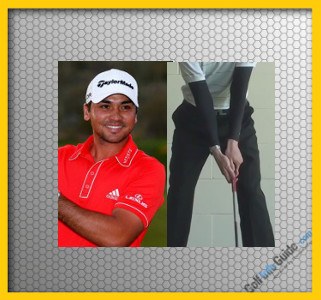
Prior to the adjustment, Day’s grip was a little on the strong side, with the back of his left hand pointing slightly upward, rather than directly at the target, at address. This is a pretty common position among modern-day pros as they try to maximize their driving distance. A strong grip can help many amateurs, too.
Known for his power but also an excellent putter, Jason Day’s grip with the flat stick is picture perfect. His palms are parallel in a neutral position, the left wrist “un-cocked” or “un-hinged” to prevent excess movement while keeping the forearm and putter face aligned. Also worth noting is Day’s grip pressure – it’s extremely light, which prevents tension and enhances touch on fast greens.

You might also spot a small oddity in Stenson’s right hand. His thumb is on top of the handle, pointing down the shaft, instead of running across the grip and pointing to his left. While this is fairly common with golfers’ putting grips (a la Tiger Woods), you don’t often see it with a pro’s full swing grip. It’s likely a position Stenson adopted as a young player and never had a reason to change. As the saying goes, if it ain’t broke…
Also slightly unusual is Henrik Stenson’s grip with the putter. Where most pros and many amateurs prefer the reserve-overlap style, he sticks with his standard full-swing overlap. This is actually a change from past years, when Stenson employed a double overlap. His right pinky finger sat atop the notch between his left ring and middle fingers; the right ring finger rested on the groove between the left middle and index fingers.
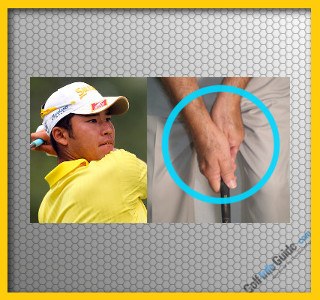
Matsuyama sets up to the ball with his hands in ideal positions. The left is perfectly neutral – his glove logo points almost parallel to the target line, with a nice blend of palms and fingers in control. The right hand is actually in a mildly strong position; the back of his hand is nearly flush with his wrist, putting the palm a little “underneath” the handle. This “mixed” grip style is fairly common among today’s tour pros.
Matsuyama’s swing is a picture of purity. His hands are high at the top, club shaft parallel to the ground and clubface on plane. A neutral grip makes this enviable position much easier to attain than a grip that’s too strong or too weak.
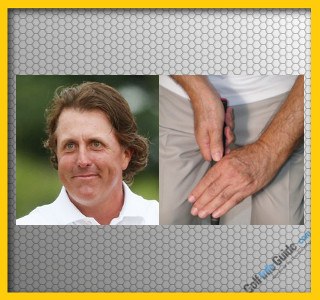
On the greens, we find the five-time major champion in experimental mode. Mickelson has favored a conventional, reverse-overlap putting grip through most of his career. He first tried the Claw grip (aka the “saw” grip), popularized by Chris DiMarco, in 2012, and alternated between styles in the following years.
Phil Mickelson grip – the claw, that is – finds the right hand grasping the top of the club, his thumb extended down the shaft. With his left hand separated from the right, he cradles the handle lightly between the thumb, index and middle fingers. Mickelson believes the claw improves his touch and speed on extra-fast greens.

Arnie, whose father was a teaching pro, was (and remains) a firm believer in sound setup fundamentals. His grip shows perfectly matching left- and right-hand positions – the “V” formed by the thumb and forefinger of each hand points just right of his sternum, with the back of his left hand perpendicular to the target line.
If Palmer’s grip was so good, you may be asking, how did his swing end up looking so awkward? Simple. He under-rotated the hands and arms on the backswing, causing the clubface to close. To avoid hitting a huge hook, he compensated by holding off on releasing the club at impact, causing the so-called “helicopter” finish.

Look closely at Woods’ setup and you’ll notice the fingers on his left hand form a nearly 90° angle to the handle and shaft. This helps him keep the club secure throughout the backswing with minimal pressure, and prevents the wrists from becoming overly active on the downswing.
As for Tiger Woods grip with the putter, it’s a conventional reverse-overlap style, right hand below the left, with both hands in a neutral or square position. He places his thumbs straight down the center of the putter grip. Woods’ grip is conducive to an arc-style putting stroke in which the face opens in relation to the target line going back, then closes after impact.
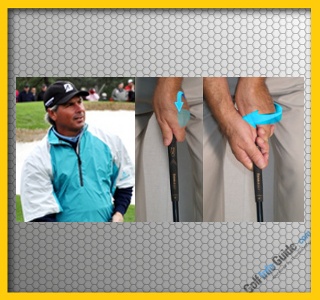
Calling Couples’ grip unorthodox is like calling Mt. Everest a big hill. At address, his left hand is turned well to the right on top of the handle, creating a large “cup” in the wrist. In fact, the knuckles on the back of Couples’ left hand point well in front of him. Contrast this with a conventional neutral grip, where the knuckles face the target (or point slightly right). Couples’ right hand is in a strong position as well.
While many teachers advocate a moderately strong grip to their students, few if any would advise a golfer to hold the club like “Boom Boom.” However, there is one thing worth emulating – Couples’ grip pressure. It’s extremely light, which promotes a smoother rhythm throughout the swing.





